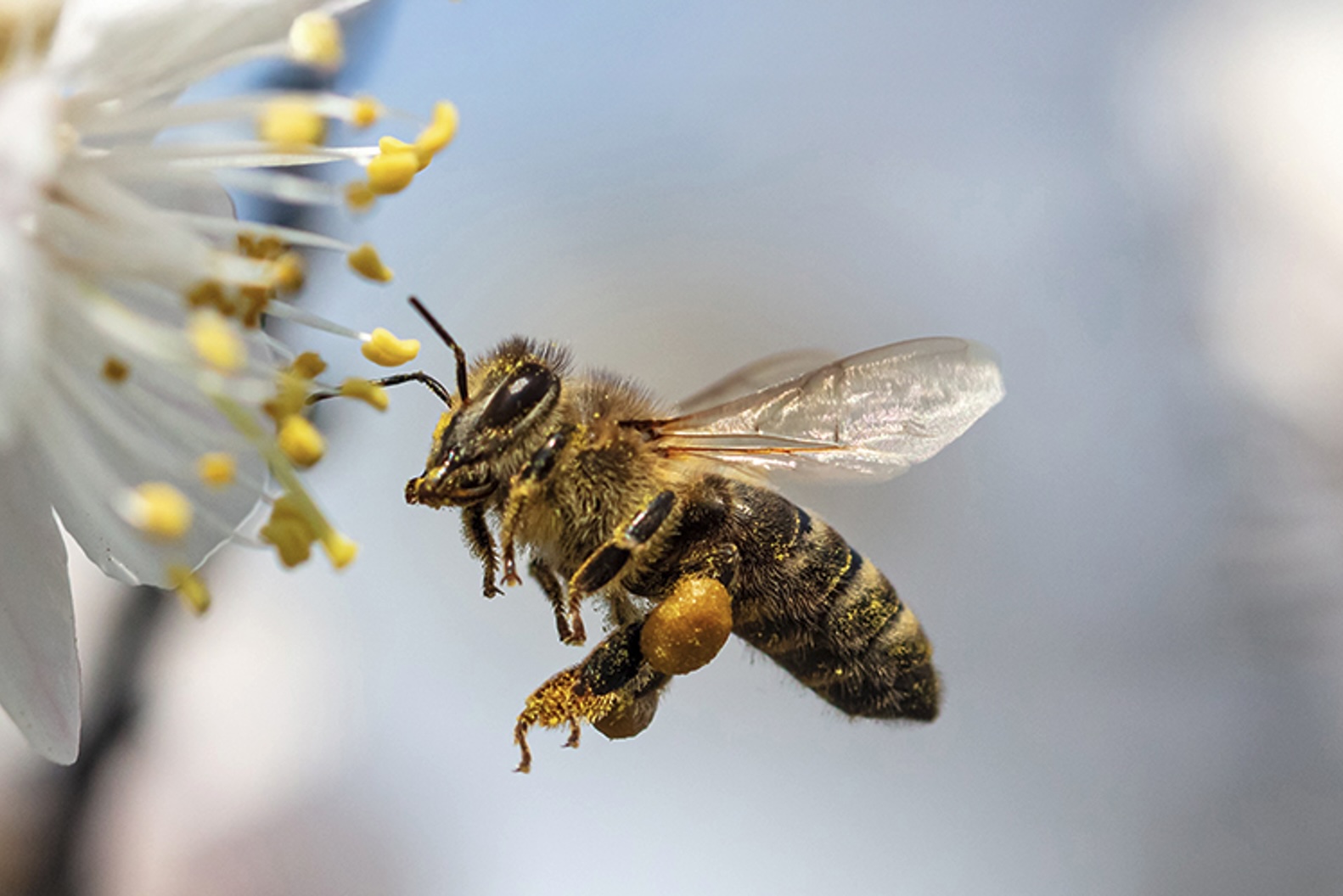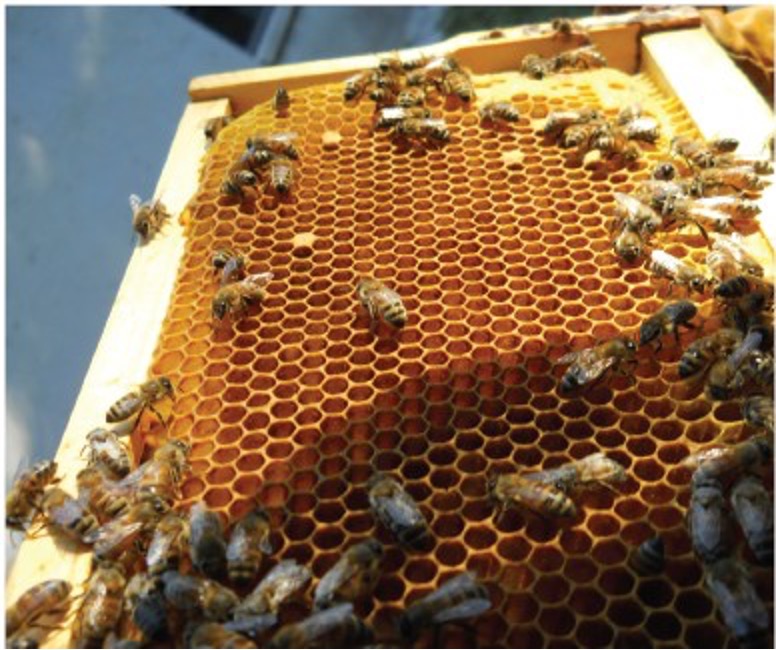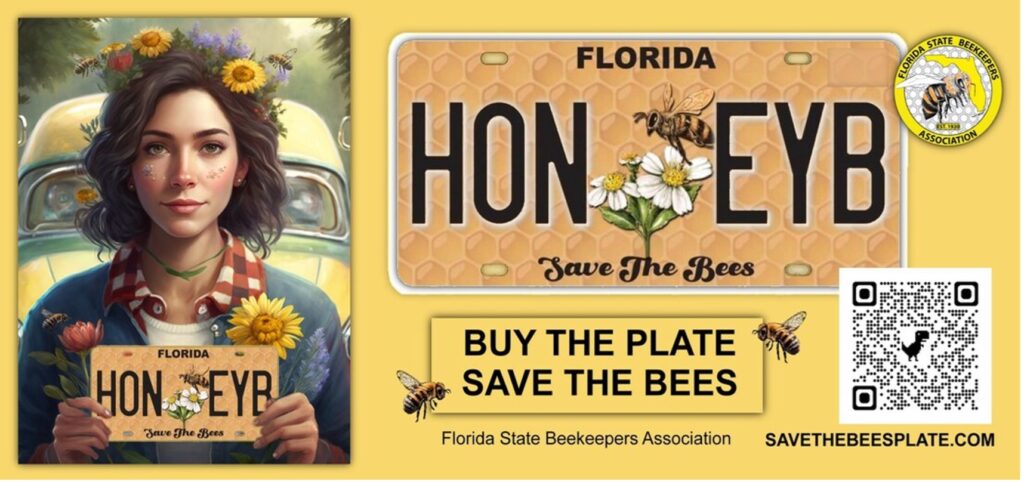
LOCAL BEEKEEPERS AND HONEY PRODUCERS SHARE THE BUZZ BEHIND THE HIVES
Often stung by a bad reputation and feared by nearly one in ten people, the tiny honeybee has a knack for landing in sticky situations. Who could forget the “killer bee” headlines buzzing through the news in the late ’90s?
“Many people confuse honeybees with wasps or hornets and assume aggression. In truth, honeybees are docile, focused, and critical to our ecosystem. Bees are not out to get us; they are just traveling and trying to get home,” explained Iam Hedendal, founder of Florida Honeybees in Delray Beach.
Beekeeping isn’t a walk in the park—it’s a full-blown labor of love that’ll keep you busier than a bee.
“Honeybees are special,” added Brad MacKenzie of Sanibel Honey. “No other food we eat comes from an insect.”

Thankfully, local apiarists suit up to tend to the queen, wrangle the hive, and keep the honey-producing world thrumming.
“I first became interested in bees when I was 12, after my uncle gave me two hives for just a dollar each. I still have them,” said Allen “Buddy” Walker, owner of Walker Farms in Fort Myers. “You really have to love the business. We are constantly battling destructive insects and having to find FDA-approved chemicals to fight them, but it’s worth it.”
Across the globe, there are over 20,000 bee species, and Florida is home to more than 300 of them, including native bees and the rare blue striped Osmia calamintha. Although honeybees aren’t indigenous to Florida, they prosper in the state’s mild climate annually.
“Our bees thrive in the subtropical richness of South Florida, where something is always blooming. From mango and avocado to saw palmetto and Brazilian pepper, nectar flows nearly year-round. But we also face challenges like extreme heat, pesticide drift, hive beetles, and relentless ants, not to mention overdevelopment removing wild forage and nesting areas,” said Hedendal.
Honeybees from Europe were introduced to the U.S. and have since expanded their range across the country, including Florida. Africanized honeybees, a more aggressive hybrid, have also extended into southern parts of the country, raising concerns about their impact on other bee populations.
Ron Bender, owner of Naples Bees, clarified, “Feral bees are well-suited to the area and excellent honey producers. I believe that genetic diversity is crucial for the health and productivity of a hive. Many issues with bee decline stem from a lack of natural genetic selection, exacerbated by widespread managed queen breeding, particularly in commercial beekeeping. Letting ‘survival of the fittest’ take its course is nature’s way of helping species survive and adapt to change.”
MacKenzie said many commercial bees are stressed by being transported across states to pollinate crops like almonds, which aren’t ideal for them. “This contributes to the spread of diseases and colony collapse disorder. Although reports of 70% bee losses may sound alarming, they are somewhat misleading. Commercial beekeepers manage thousands of hives, so the remaining 30% still amounts to millions of bees.”
“Bees aren’t just dying off; they’re being harmed by human activity and pollution. It’s not only about losing bees but also about poisoning the planet,” added MacKenzie.
The Florida Department of Agriculture warns that habitat loss, pests, diseases, and the use of insecticides threaten many bee species. One, the rusty patched bumblebee, has declined by over 90%. Other species at risk include Franklin’s, Oregon, yellow-banded, and American bumblebees.
Florida’s honeybees aren’t endangered but face similar threats. Local experts cite chemical pesticides and natural disasters as the primary threats to bees.
“In the Naples area, there seems to be no shortage of bees. I sometimes have more bees than I can host and offer hives to other area beekeepers,” said Bender. “If not for widespread spraying, wild bee populations would be even larger. The biggest threat comes from pesticides—especially mosquito sprays—that cause many deaths and setbacks for foraging bees. Remote beekeepers also contend with bear attacks, with electric fences being the only effective protection.”
MacKenzie shared that over recent hurricane seasons, all 50 hives across his bee yard and residential sites on Sanibel Island were destroyed.
“Wild colonies have been heavily impacted by development and pests, but backyard beekeeping and education are helping managed hives increase. Pesticides, especially neonicotinoids and landscape sprays, are devastating. They disorient foragers, weaken colonies, and cause mass die-offs. Predators like raccoons also cause major disruptions,” said Hedendal.
Successful hive management requires a balance of space: too little causes swarming, too much invites pests like wax moths and hive beetles. To maintain stability, Bender adjusts hive boxes based on colony size, queen activity, and seasonal changes.
MacKenzie noted that chemicals can make bees more aggressive and explained that bees primarily protect the brood and respond to vibrations and scent. He joked, “I always play The Grateful Dead when tending the bees; it helps them recognize me when I’m collecting rent (honey).”
“Patience, humility, and observation are key. You’re not ‘in charge’ of bees—you’re in partnership with them,” said Hedendal. “Every beekeeper faces challenges like Florida’s fast-paced seasons, swarming, mite control and the emotional toll of colony loss.”
According to the Florida Department of Agriculture and Consumer Services, Florida ranks among the nation’s top five honey-producing states, generating 17 million pounds annually, which is valued at $27 million. One pound of honey takes 3 million flower visits; one teaspoon is a lifetime’s work for 12 bees.
Bender noted that a healthy hive can produce several pounds of honey annually, with his Naples apiary yielding 800 to 1,000 pounds over two to three harvests, though not every hive produces honey each time. Using “BeeCams” to monitor entrances and observe behaviors like orientation flights, he emphasized that successful beekeeping requires hands-on care, multiple hives, and “always leaving enough honey for the bees’ own needs.”

“The bees I keep do very well in Southwest Florida,” said Bender. “I have had success letting the ‘bees be bees.’ They like it hot, with hive temperatures reaching up to 95 degrees. But once it dips into the 70s, their activity significantly slows down. Swarm traps help catch new colonies. “We inspect hives every three weeks to check queen health, brood, honey stores, and pests. During nectar flows, once 80% of a frame is capped, it’s ready for harvest. We extract honey using centrifugal force, bottle it fresh, and label it by season or floral source,” Hedendal said. “Maintenance is nearly year-round, with five to six harvests per hive depending on bloom cycles. The honey is strained but never filtered or heated, preserving enzymes and pollen.”
Honey is rich in antioxidants that may boost heart health, memory, and brain function. Wildflower honey can help alleviate allergies but is less popular due to its distinctive flavor. Beekeepers harvest only fully capped honey, prioritizing quality, and reuse leftover wax for candles and lip balms. “Nothing goes to waste,” said Bender.
MacKenzie explained, “Honey from grape seeds tends to be lighter in color, while honey harvested from mangrove blossoms often produces a darker honey with richer notes. Both types have unique benefits and distinct flavors that reflect their floral sources. Harvesting too early can lead to lower-quality honey.”
Beyond producing the natural sweetener, bees contribute an estimated $65 million yearly through pollination, supporting healthy plant growth and the state’s fruit and vegetable crops.
Each hive consists of three main types of bees: a single queen responsible for laying eggs, thousands of female worker bees that handle all the tasks needed to maintain the hive, and seasonal male drones whose sole purpose is to mate with new queens.
Bender described how hive behavior changes throughout the year. During nectar flows, when flowers bloom and nectar is abundant, bees stay calm and focused on foraging. However, during nectar shortages, hives can become more defensive and may even rob other hives for honey. Bender noted he checks his apiary daily without a bee suit but always suits up and uses a smoker when opening hives to manage bee behavior if needed.
“Spring brings explosive growth, swarming, and queen production. Summer is the peak for nectar gathering. Fall is prepping for dearth. Winter in Florida is mild but still requires attention. They follow nature’s calendar, not ours,” said Hedendal.
“Hives are like people in that the individual hive has its own temperament. Some hives are more defensive than others, but I’ve yet to run across a hive that cannot be controlled by proper use of the smoker,” shared Bender. “A defensive hive is more likely to be a very successful hive in that it has a low tolerance for many of the pests that beehives have to contend with. Everything boils down to the genetics of the queen, because that determines the genetics and resulting traits of the total bee population.”
“Every hive I rescue gets a second chance. I believe in the sacredness of these creatures. The honey? It’s the real deal—award-winning, seasonal, and always raw. Local bees, local flavor, local heart,” said Hedendal.
Beyond agriculture, these iconic pollinators also aid in healing. For example, the VA HIVE Program utilizes beekeeping therapy for military veterans. And MacKenzie shared how he partners with a group that uses beeswax as a natural adhesive to mend cracked turtle shells.
The Palm Beach and Southwest Florida Beekeepers Associations support all levels of beekeepers, host workshops, promote hive health, advocate for sustainability, and connect the public while celebrating honeybees’ dynamic function.
“Even after all these years, I still love catching swarms, spotting queens, and harvesting quality honey,” said Bender. “I am always amazed by the bees’ skillful work.”






